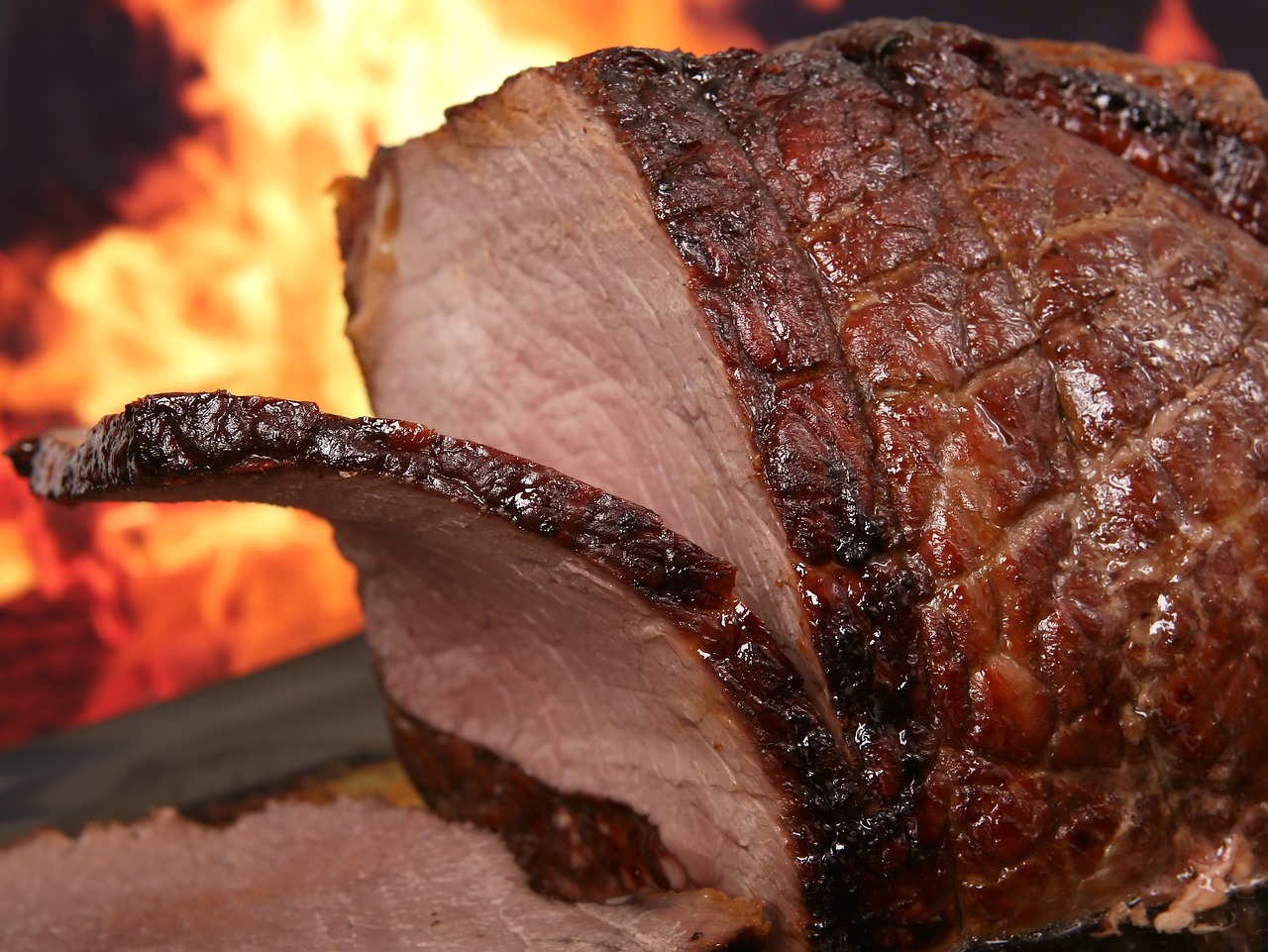Imagine the sizzling aroma of perfectly grilled meat wafting through the air on a warm summer evening. Now picture yourself in a backyard cookout, surrounded by friends and family eagerly awaiting a delicious feast. In the world of barbecue enthusiasts, the battle between Grilla Chimp and Silverbac grills has become a hot topic of debate. Both these grills boast impressive features and mouthwatering results, leaving backyard chefs torn between which one to choose. Let’s take a closer look at the showdown between Grilla Chimp and Silverbac to help you decide which grill reigns supreme in the world of outdoor cooking.
1. Origin and Background
1.1 Grilla Chimp
The Grilla Chimp, also known as the Chimpanzee (Pan troglodytes), is a species of great ape native to the African continent. They are one of the closest living relatives to humans, sharing approximately 98% of our DNA. These intelligent and social animals have a long history that dates back millions of years.
1.2 Silverbac
The Silverbac, scientifically known as the Ursus arctos horribilis, is a subspecies of the North American grizzly bear. They are commonly found in the forests and mountain ranges of North America, particularly in Alaska and western Canada. The name “Silverbac” comes from the silver-tipped hairs that cover its back, lending it a distinctive appearance.
2. Physical Characteristics
2.1 Grilla Chimp
Grilla Chimps have a robust build, with males typically being larger and more muscular than females. They possess a coat of coarse black hair that covers most of their body, apart from their face, palms, and soles of their feet. Their arms are longer than their legs, and they use their knuckles to walk in a way known as “knuckle-walking.” They have a prominent brow ridge, large ears, and a face that is mostly hairless.
2.2 Silverbac
Silverbacs are massive creatures, with males often weighing over 1,000 pounds and standing up to 9 feet tall when on their hind legs. They have a thick coat of fur, which can vary in color from light brown to almost black, with the silver tips on their back giving them their name. These bears have sharp claws that are capable of tearing through tough hides and powerful muscles that allow them to dig, climb, and swim with ease.

3. Social Behavior
3.1 Grilla Chimp
Grilla Chimps are highly social animals that live in complex social groups known as communities. These communities can consist of anywhere from 15 to 150 individuals, with multiple males and females. Within these communities, a dominant male known as the alpha male leads and protects the group. Chimps communicate through a variety of vocalizations, gestures, and facial expressions, showcasing their intelligence and ability to form strong social bonds.
3.2 Silverbac
Silverbacs, on the other hand, are mostly solitary animals, spending a majority of their time alone. However, they are not completely anti-social and do engage in social interactions on occasion. Male Silverbacs, in particular, may form temporary associations with other males during mating season or when searching for food sources. They communicate through growls, roars, and body postures, using these cues to establish dominance or communicate their intentions.
4. Diet and Feeding Habits
4.1 Grilla Chimp
Grilla Chimps are omnivorous, meaning they eat both plant and animal matter. Their diet primarily consists of fruits, leaves, buds, and seeds, but they are also known to hunt and consume insects, small mammals, and even other primates. Chimps use tools, such as sticks or rocks, to extract food or crack open nuts. They possess impressive problem-solving skills when it comes to obtaining their meals.
4.2 Silverbac
Silverbacs are primarily carnivorous, with their diet consisting mainly of fish, small mammals, carrion, and occasionally larger game. During the summer months, when food sources are abundant, they also consume berries, grasses, and nuts to supplement their diet. These bears are incredibly efficient hunters and can catch salmon swimming upstream with great agility. Their claws and strong jaws are well adapted for capturing and eating their prey.

5. Habitat and Range
5.1 Grilla Chimp
Grilla Chimps inhabit a diverse range of habitats, including tropical rainforests, woodlands, and savannas in Central and West Africa. They are adaptable creatures, able to thrive in a variety of ecosystems, but are dependent on the presence of trees for nesting, feeding, and protection. Deforestation and habitat loss pose significant threats to their survival and restrict their range.
5.2 Silverbac
Silverbacs primarily inhabit remote areas of forests and mountains in North America. They are most commonly found in Alaska, western Canada, and parts of the United States, where they have access to ample food sources and suitable habitats. These bears prefer areas with dense vegetation cover, providing them with ample opportunities for cover, hunting, and denning.
6. Conservation Status
6.1 Grilla Chimp
Grilla Chimps are listed as endangered by the International Union for Conservation of Nature (IUCN). Their populations have been significantly impacted by habitat loss, illegal hunting for bushmeat, and disease outbreaks like Ebola. Conservation efforts, including habitat protection and anti-poaching measures, are crucial for the survival of these incredible creatures.
6.2 Silverbac
Silverbacs are considered a species of least concern by the IUCN. However, within certain regions, they may face specific conservation concerns. For instance, some populations of Silverbacs, such as the Mexican grizzly bear, are critically endangered due to habitat loss and hunting. Overall, the conservation status of Silverbacs varies across their extensive range.

7. Threats and Challenges
7.1 Grilla Chimp
Grilla Chimps face numerous threats and challenges that impact their populations. Habitat destruction, mainly due to deforestation for agriculture and logging, disrupts their natural habitats and limits their available food sources. Moreover, illegal hunting and the bushmeat trade pose significant risks to their survival, as they are often targeted for their meat, which is considered a delicacy in some areas.
7.2 Silverbac
The main threats faced by Silverbacs are habitat loss and fragmentation due to human activities, such as logging, mining, and urban expansion. This destruction of their natural habitat reduces available food sources and can increase human-bear conflicts. Additionally, illegal hunting and poaching also pose potential dangers to these bears, although regulations and conservation efforts have helped mitigate some of these threats.
8. Adaptations and Unique Features
8.1 Grilla Chimp
Grilla Chimps exhibit several unique features and adaptations that set them apart. Their opposable thumbs and flexible fingers allow them to grasp and manipulate objects with precision, enabling the use of tools. They are also capable of complex problem-solving and demonstrate a remarkable understanding of cause and effect. Their large canine teeth serve as a visual display of dominance and aggression.
8.2 Silverbac
Silverbacs possess remarkable adaptations that contribute to their survival in their respective habitats. Their thick fur provides insulation during colder months, while their sharp claws aid in digging for food and constructing dens. They have a keen sense of smell that helps them locate prey or detect potential threats. Their massive size and strength act as deterrents against most predators.

9. Interactions with Humans
9.1 Grilla Chimp
Grilla Chimps have had both positive and negative interactions with humans throughout history. These primates have been subjects of scientific research, contributing to our understanding of their behavior, genetics, and cognition. However, they have also suffered from habitat destruction, hunting, and capture for the pet trade. Conservation organizations and anti-poaching efforts aim to protect these iconic creatures and promote coexistence with local human communities.
9.2 Silverbac
Due to their solitary nature and remote habitats, Silverbacs have limited direct interactions with humans. However, encounters can occur when their territories overlap with human settlements or popular recreational areas. Human-bear conflicts may arise when bears are attracted to human food sources, such as garbage or improperly stored food. Conservation programs work towards educating the public about responsible food management and implementing measures to minimize these conflicts.
10. Future Outlook and Research
10.1 Grilla Chimp
The future of Grilla Chimps depends on our collective efforts to conserve their natural habitats, combat illegal hunting, and address the threats they face in the wild. Researchers continue to study their behavior, genetics, and social dynamics to further our understanding of these remarkable creatures. Conservation organizations and local communities play a crucial role in advocating for their protection and sustainable coexistence.
10.2 Silverbac
While the overall conservation status of Silverbacs remains relatively stable, ongoing research is still vital for understanding their specific regional populations and addressing their conservation concerns. Efforts to protect their habitats, implement responsible tourism practices, and enforce strict poaching regulations are needed to ensure a positive future for Silverbacs and their ecosystems.
In conclusion, the Grilla Chimp and the Silverbac are remarkable creatures that have adapted to their respective environments in different parts of the world. While they may have distinct physical characteristics and social behaviors, both species are facing challenges in their survival due to habitat loss, hunting, and other human-induced threats. It is essential for us to recognize the value of these species and take collective action to protect and conserve them for future generations.
